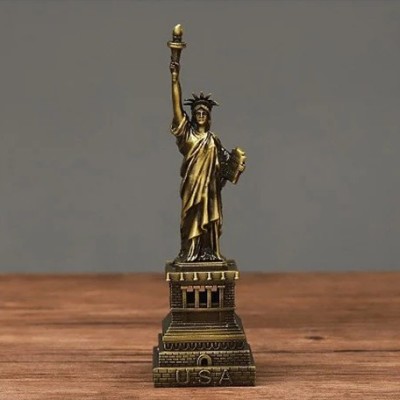
homesteading.com
Discover Late Summer Foraging: Unearthing Nature’s Hidden Edibles
Late summer foraging gives you access to wild foods that thrive during the hottest stretch of the growing season. By August, certain edible plants reach their peak. Mushrooms begin to appear after steady rains and cooler nights.
Most foraging can be done close to home. Plants grow along fence lines, roadside ditches, and the edges of woods. With proper identification and basic handling, many of these seasonal foods are easy to clean, cook, or store for later use.
Edible Plants That Thrive in Late Summer
Some of the best wild foods grow where people least expect them: cracked soil, drainage ditches, or the edge of an old trail. These plants often go unnoticed until you know what to look for. Once you do, they’re easy to find and even easier to use.
Purslane
This low and spreading plant forms thick mats with red stems and smooth, paddle-shaped leaves. It prefers compact soil and full sun. Purslane has a tangy flavor and is high in omega-3s. Use it fresh in salads or lightly cooked with garlic.
Lamb’s Quarters
Often found near gardens, compost piles, or barn lots, lamb’s quarters have broad, dusty-green leaves and a mild taste similar to spinach. It’s rich in calcium and iron. Cook it like you would collards or blend it into soups.
Wood Sorrel
Often mistaken for clover, wood sorrel has heart-shaped leaflets and small yellow flowers. It has a sharp, citrus taste due to oxalic acid, so use it sparingly. Add fresh leaves to salads or steep them into a tart herbal tea.
Staghorn Sumac
This native shrub produces upright cones of red, fuzzy berries by mid-to-late August. The berries are tart and high in vitamin C. Soak them in cold water to make a refreshing drink. Be careful not to confuse it with poison sumac, which has smooth white berries and grows in wetlands.
Late summer foraging depends on learning what’s available where you live. Conditions vary by region, so consult a local field guide or a site like Wild Edible to verify plant characteristics.
Mushrooms to Watch For When You Forage in Late Summer
After a few days of steady rain and warm nights, mushrooms begin to surface. Late summer brings species that rarely show earlier in the season. These fungi often appear fast and disappear just as quickly.
Chanterelles
Look in moist hardwood stands, especially near oaks or beeches. Chanterelles stand out with their golden color and ridged undersides. Unlike gills, these ridges are shallow and forked. Their scent is sweet and fruity. When cooked, they hold their texture and blend well with simple fats like butter or olive oil.
Chicken of the Woods
This bright orange fungus grows in thick, layered shelves on dead or dying trees. The texture is dense and chewy, similar to cooked poultry. Avoid specimens on conifers or eucalyptus; they’re more likely to cause digestive trouble. Always cook thoroughly before eating.
Lobster Mushrooms
Not a true mushroom but a parasitic species that transforms its host. It turns pale mushrooms into dense, red-orange lumps with a seafood-like aroma. The interior is firm and white, ideal for broths, stews, or slicing into sauté pans.
Mushrooms are a key part of late summer foraging, but accuracy matters more than abundance when collecting them. Confirm species with multiple references, such as MushroomExpert.com, and avoid harvesting anything you can’t identify with confidence.
Harvest Responsibly When Foraging
Collecting wild food comes with the responsibility to protect the plants, fungi, and habitat that support it. Every plant you cut, every mushroom you pick, affects what grows back. Responsible foraging means thinking beyond your basket.
When foraging, small changes in behavior have a lasting impact:
Cut leafy plants above the root rather than pulling them out of the ground
Take no more than one-third of any patch to allow regrowth and reseeding
Use a basket or mesh bag for mushrooms to help spread spores as you walk
Avoid trampling fragile plants or digging into damp forest soil unnecessarily
Pay attention to where you are. Some public lands allow foraging with limits. Others don’t allow it at all. Check local rules before collecting on park land, near trailheads, or along water sources.
In the context of late summer foraging, overharvesting is more likely as plant growth slows and options become limited. A measured approach ensures you can return to the same areas next year and still find usable and healthy food.
The Value of Late Summer Foraging
Late summer foraging offers access to wild foods that are often missed earlier in the season. Some plants reach full maturity in August, while certain mushrooms appear only after consistent heat followed by rain.
Even small harvests can be useful. A short walk may yield herbs, berries, or fungi worth cooking or drying. These ingredients may not be abundant, but they are often more concentrated in flavor and easier to preserve.
This part of the season also sharpens practical skills. Foragers must pay closer attention, move more slowly, and choose what to take with care. The process encourages better identification, stronger habits, and a deeper understanding of local plant cycles.
What are you finding in your area? Leave a comment and share your best tips for late summer foraging.
FAQs
Q1. What is late summer foraging?
Late summer foraging is the practice of collecting wild edible plants and mushrooms during August and early September, when certain species are at their peak.
Q2. What are the best plants to forage in late summer?
Purslane, lamb’s quarters, wood sorrel, and staghorn sumac are commonly found and easy to identify in many regions.
Q3. Which mushrooms grow in late summer?
Chanterelles, chicken of the woods, and lobster mushrooms are common finds when conditions are warm and wet.
Q4. How do I know if a wild plant is safe to eat?
Use a trusted field guide or regional resource. Never eat a plant unless you are 100% sure of its identification.
Q5. What tools should I bring when foraging?
Bring a small knife or scissors, gloves, a basket or mesh bag, and a plant or mushroom guide for identification.










